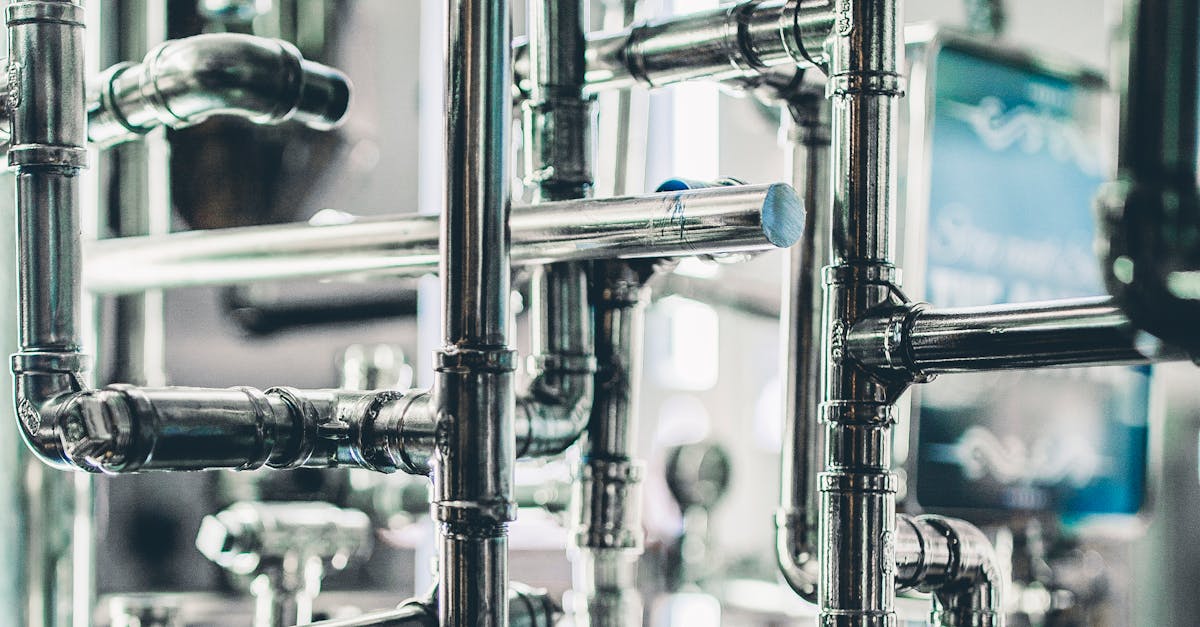
Table Of Contents
Common Causes of Backflow Incidents
Backflow prevention is a crucial aspect in maintaining the integrity of plumbing systems, yet several common causes can lead to backflow incidents. The improper installation of backflow preventers is a key factor contributing to potential backflow issues. When these devices are not correctly installed or maintained, they may fail to function effectively, allowing for the unwanted reversal of water flow within the plumbing system. Additionally, a lack of regular maintenance and testing of backflow preventers can result in malfunctioning devices, increasing the likelihood of backflow occurrences. It is imperative to ensure that backflow prevention devices are installed by qualified professionals and undergo routine inspections to uphold their efficiency in safeguarding against backflow incidents.
Identifying potential causes of backflow in plumbing systems
Potential causes of backflow in plumbing systems can stem from several sources. One common trigger is back-siphonage, which occurs when there is a drop in pressure in the supply line. This negative pressure can lead to a reversal of the water flow, drawing contaminants back into the clean water supply. Additionally, backpressure can cause backflow by exerting pressure greater than that of the supply line, forcing water to flow in the opposite direction. These instances highlight the critical importance of backflow prevention devices in safeguarding water quality in plumbing systems.
Inadequate air gaps and cross-connections are also factors that can contribute to backflow incidents in plumbing systems. An air gap is a physical separation between the water outlet and the flood level rim of a fixture, ensuring that no backflow can occur due to gravity. On the other hand, cross-connections are points in plumbing systems where potable water connects with non-potable water sources, posing a risk for contamination. Addressing these vulnerabilities through proper installation, maintenance, and regular testing of backflow prevention devices is paramount in upholding the integrity of water supply systems.
Testing and Certification of Backflow Preventers
When it comes to ensuring the efficiency and reliability of backflow prevention devices, testing and certification play a crucial role. Regular testing and certification of backflow preventers are essential to guarantee that these devices are functioning as intended to prevent the unwanted reversal of water flow in plumbing systems. Through proper testing and certification processes, potential issues or malfunctions in backflow preventers can be identified and rectified promptly, thereby maintaining the integrity of the plumbing system and safeguarding against backflow incidents.
The importance of regular testing and certification for backflow prevention devices cannot be overstated, particularly in environments where water quality and safety are paramount. By adhering to established testing and certification protocols, property owners can demonstrate compliance with relevant regulations and standards, providing reassurance that their backflow prevention measures are in place and effective. Additionally, certified backflow preventers instill confidence in both residential and commercial settings by ensuring that appropriate measures are in position to mitigate the risks associated with backflow scenarios.
Importance of regular testing and certification for backflow prevention devices
Regular testing and certification of backflow prevention devices is crucial to ensure the proper functioning of plumbing systems. Backflow prevention safeguards against the undesired reversal of water flow, which can lead to contamination and health risks. Testing these devices on a routine basis is essential to confirm that they are operational and effective in maintaining the integrity of the water supply.
Certification of backflow prevention devices provides assurance that they meet industry standards and are capable of preventing backflow incidents. Without regular testing and certification, these devices may fail to operate correctly when needed, leaving the water supply vulnerable to potential contamination. By prioritising the maintenance and certification of backflow prevention devices, both residential and commercial properties can uphold the safety and quality of their water systems.
Residential vs. Commercial Backflow Prevention
Residential and commercial properties differ significantly in their requirements for backflow prevention systems. In residential settings, backflow prevention may be less complex due to the smaller scale of plumbing systems involved. Typically, residential properties utilize backflow preventers that are easier to install and maintain, like pressure vacuum breakers or reduced pressure zone devices. These devices are essential for safeguarding against backflow incidents, ensuring that contaminated water does not flow back into the main water supply.
On the other hand, commercial properties often face more stringent regulations and need to implement more advanced backflow prevention measures. The complexity of commercial plumbing systems, including boilers, fire sprinkler systems, and other intricate machinery, necessitates the use of high-grade backflow preventers. Regular inspections and maintenance are crucial in commercial settings to ensure that the backflow prevention devices are functioning optimally. Properly maintained backflow prevention systems not only protect the health and safety of occupants but also comply with regulatory standards to avoid hefty fines or legal penalties.
Variations in backflow prevention requirements for residential and commercial properties
When it comes to backflow prevention, residential and commercial properties have varying requirements to ensure the safety and quality of their plumbing systems. Understanding these distinctions is crucial for maintaining clean water supply and preventing contamination. In residential settings, backflow prevention devices are generally simpler and less complex compared to those required in commercial properties.
Residential backflow prevention systems often focus on basic protection for single-family homes and small complexes. Typically, backflow preventers in residential properties are installed at the main water entry point to the house, safeguarding against backflow incidents. In contrast, commercial properties, such as office buildings, restaurants, and industrial facilities, require more sophisticated backflow prevention solutions due to the scale and complexity of their plumbing systems. Properly meeting the distinct needs of both residential and commercial properties is essential in safeguarding public health and ensuring the integrity of water supply systems.
FAQS
What is backflow and why is it a concern?
Backflow is the reverse flow of water in a plumbing system, which can contaminate potable water with non-potable substances. This poses a health risk and is a serious concern for public health and safety.
How does a backflow preventer work?
A backflow preventer is a device installed in a plumbing system to ensure that water flows in only one direction, preventing the backflow of contaminated water into the clean water supply.
What are some common causes of backflow incidents?
Common causes of backflow incidents include back siphonage, back pressure, cross-connections, and breaks in the water main. These issues can create a pressure imbalance that leads to backflow.
Why is regular testing and certification important for backflow preventers?
Regular testing and certification ensure that backflow preventers are functioning correctly and meeting performance standards. This helps to maintain the effectiveness of the backflow prevention system and protect the quality of the water supply.
Are there different requirements for backflow prevention in residential and commercial properties?
Yes, there are variations in backflow prevention requirements for residential and commercial properties. Commercial properties typically have more complex plumbing systems and higher water usage, which may require different types of backflow preventers to meet regulatory standards.


